Artificial intelligence has made a breakthrough into the world of human creativity, changing previous perceptions of creative work. Does AI pose a threat to artists? Or is it their ally, opening up new opportunities? Let’s take a closer look at how AI collaboration is affecting the creative professions and lean into the future to see what they might look like soon.
AI in the creative industry – table of contents:
What are the characteristics of the creative industry?
The creative industry includes all areas of art and design. It includes, among others:
- Visual arts – from oil paintings to photography to creating icons for apps,
- Film – from a flashy commercial of a few seconds to full-length Hollywood productions,
- Literature – that is, writing in any form,
- Music – from the jingles we immediately associate with our favorite YouTube channels to symphonic music,
- Game design.
People working in the creative industry are characterized primarily by manual and technical skills related to their profession. But also creativity, imagination as well as the ability to think innovatively. Artistic sensitivity is also important.
Earnings in the creative industry vary widely and depend on the profession, experience and reputation of the creator in question. A beginner computer graphic designer or copywriter can earn about $1,000 a month, while a respected architect with many years of experience – even tens of thousands. Will generative AI change these numbers?
AI’s impact on the creative industry
The rise in popularity of artificial intelligence raises mixed feelings among artists. On the one hand, they fear that their work will be automated and AI will take over the role of the creator. On the other, they see it as a tool to make their work easier and expand their capabilities.
Potential threats from AI are primarily:
- Risk of technological unemployment – AI can replace some specialists, such as graphic designers preparing conceptual sketches or web designers,
- Unification of art – algorithms are based on existing works of art, so they can limit creativity and promote similar works,
- Authorship issues – under the law, it is quite a problem to determine who is the creator of an AI-generated work. Currently, there are no clear regulations on issues related to generative AI.
However, AI also provides new opportunities, such as:
- generating fresh inspiration – AI models can suggest non-obvious ideas and associations to artists, as well as help analyze style. In the case of writing, ChatGPT will work well here in the role of a critical editor, while in the case of images, the “describe” function available in Midjourney,
- automating simple tasks – AI can create numerous sketches or 2D designs based on a verbal description, selectively match colors to brand colors, or perform “face swaps” – swapping a model’s face in different images, etc.
- new art forms – with the facilitated creation of 3D models based on 2D graphics, AI provides an opportunity to create and present works in VR/AR technologies.
The impact of AI on the creative industry is therefore clearly neither positive nor negative. Through technology, the way we work will certainly change – it will require the ability to describe in words what we want to achieve. That is, for example, a broader knowledge of the history of literature or art to precisely define the style we want to draw inspiration from. At the same time, there will be new challenges, such as a much more difficult start for aspiring representatives of the creative industries.
AI tools for creative industry departments
Because of the inevitable intertwining of creation with generative artificial intelligence, it makes sense to base the way you work on AI tools from the beginning of your career path. Although they are evolving rapidly, new industry standards are already slowly clarifying.
Texts – support for copywriters and content managers
The primary tool to support the work of creative industry writers are three chat rooms
- ChatGPT from OpenAI,
- Google Bard, and
- Claude from Anthropic is available for those in the US and UK.
These are the most versatile solutions based on the latest language models (LLM), which, after typing the appropriate prompt, will allow not only to creation of multiple versions of advertising slogans but also a draft article. Most interestingly, they can turn into a critical editor who can point out errors in the created text and suggest valuable changes and areas for improvement.
In addition to the strong trio of chatbots, however, there is a whole range of more specialized tools to aid writing. Here are some of them:
- Copy.ai – automatically generates product descriptions, ads and other texts based on keywords,
- Rytr – ready-made templates and guidelines for writing different types of content.
- Jasper – a writing assistant to help create content in different languages.
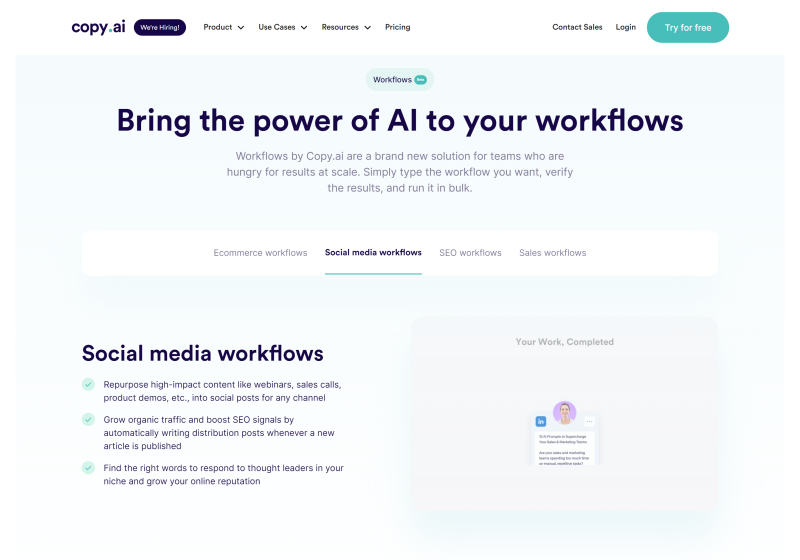
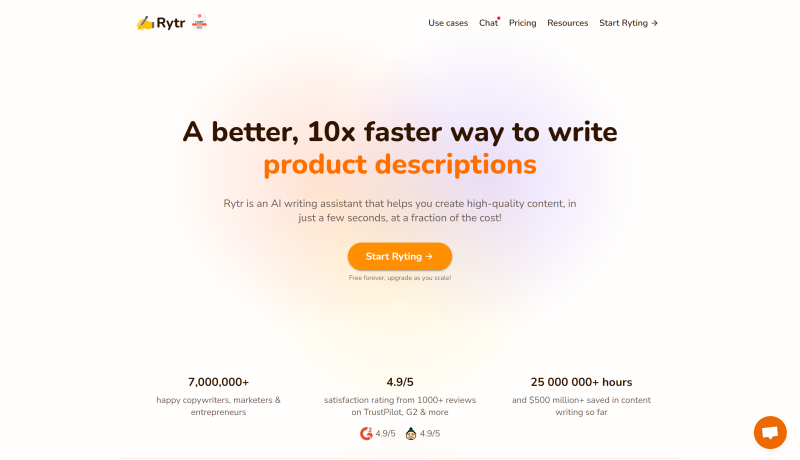
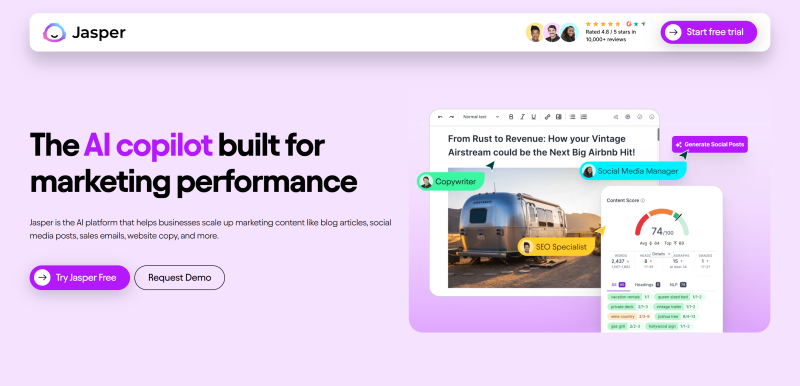
Images – AI support for graphic designers and designers
Graphic designers and designers have a range of to choose from that allow them to create sketches in a snap. Of particular note are:
- DALL-E 2 – a free tool from OpenAI that generates images based on text descriptions and enables you to generate a wider frame for an uploaded photo,
- Midjourney – creates impressive illustrations, graphics and concept sketches, unfortunately, it is only available to subscribers,
- Canva – a very popular graphic design program with AI-supported features.
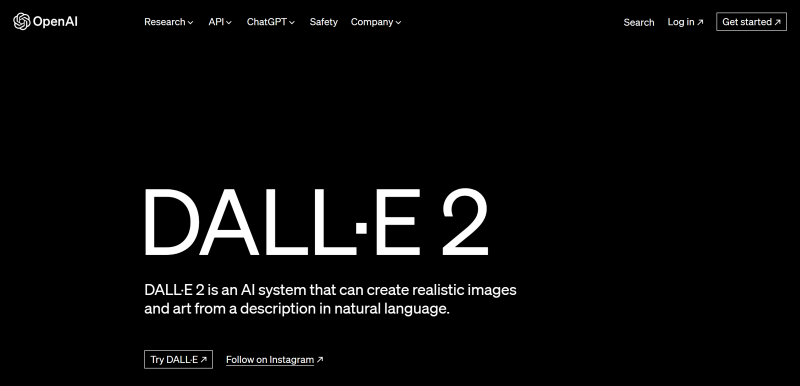
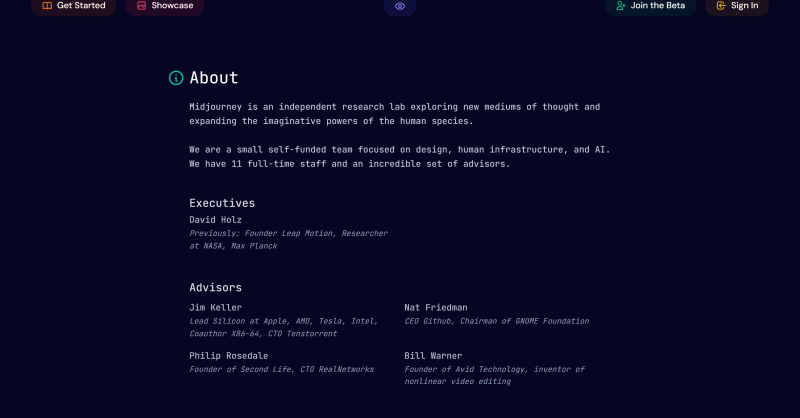
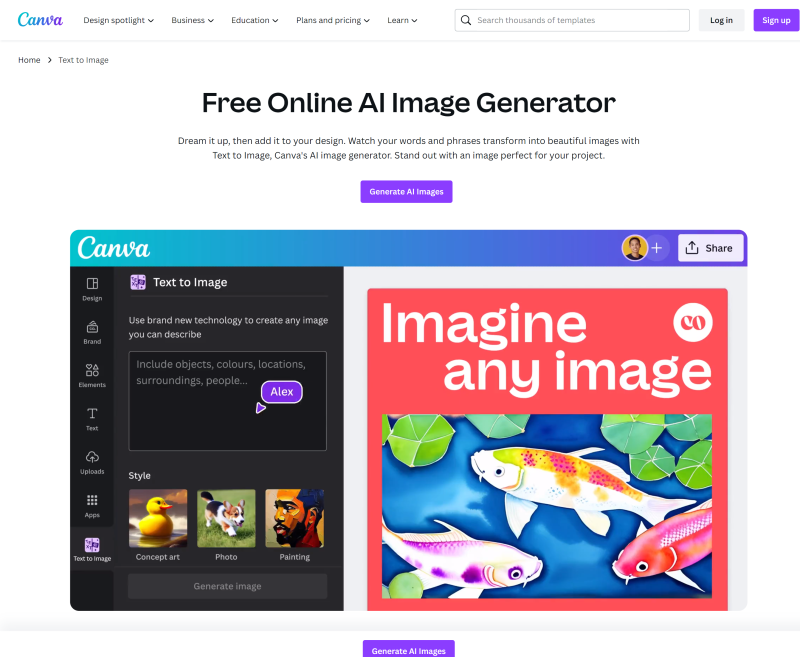
Videos – video content with the help of AI
Also, footage makers in the creative industry have a lot to choose from. Here the offer is more diverse, for example:
- Synthesia – allows you to “animate” avatars to make business video presentations more appealing,
- Runway – a platform for creating realistic videos consisting of generated, consistent images and sounds based on entered text. You can create custom scenarios or use ready-made templates.
- Descript – edits video recordings based on audio transcription.
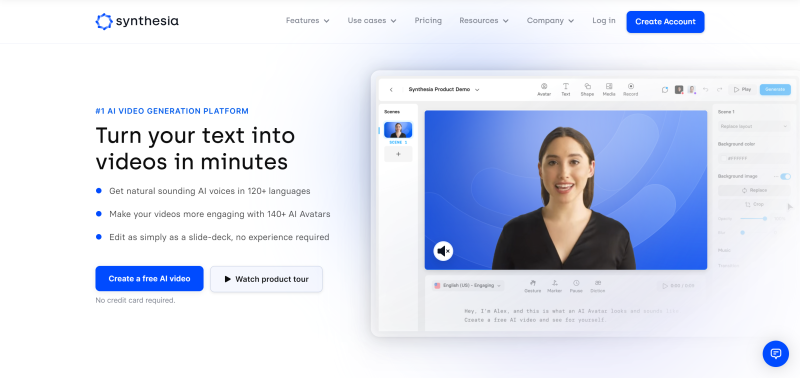
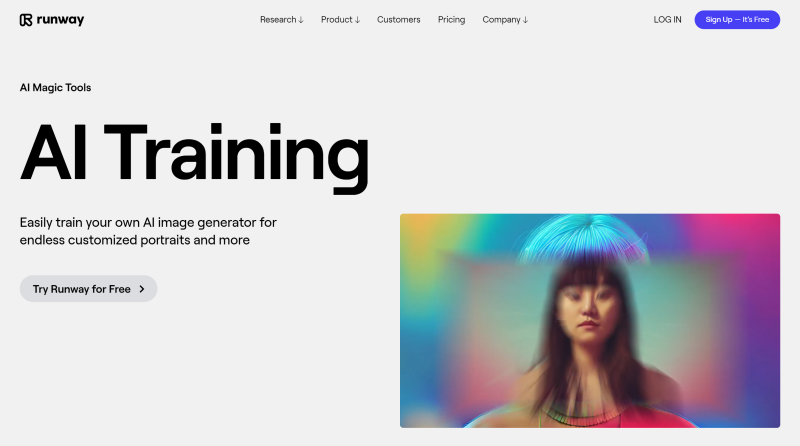

What will creative professions look like in the future?
In the perspective of a few-odd years, AI could completely transform work in the creative industry. While that’s very risky given the pace of generative AI development, let’s tempt some scenarios for the future:
- partial automation – AI takes on simple tasks, such as processing photos or creating sketches, while humans focus on conceptual work and fine-tuning the artificial intelligence’s direction.
- new professional roles – there will be positions like “AI trainer,” who teaches artificial intelligence models by pointing out which implementations are better and which are worse; which ones fit the description more, and which ones don’t,
- the increase in the importance of soft skills – qualities like creativity, empathy and reasoning will become even more important than before, as manual skills will become secondary in the creative industry,
- fusion of mind and machine – this is the most sci-fi vision, according to which, to realize the potential of AI, people will learn to think in an “algorithmic” way, and commercial brain-machine interfaces will begin to emerge, enabling non-verbal communication,
- new forms of art – with the help of artificial intelligence, completely new artistic genres and styles will be created, and commercial use of the content will be based on full personalization of content, or “creation on demand.”
The future will tell which scenario plays out. Most likely, the creative industries will see an evolution rather than a revolution. Still, it will be crucial for artists to open up to new technologies and learn to exploit them. Then AI will become not an enemy, but an ally in creating inspiring works.

If you like our content, join our busy bees community on Facebook, Twitter, LinkedIn, Instagram, YouTube, Pinterest.
Author: Robert Whitney
JavaScript expert and instructor who coaches IT departments. His main goal is to up-level team productivity by teaching others how to effectively cooperate while coding.
AI in business:
- Threats and opportunities of AI in business (part 1)
- Threats and opportunities of AI in business (part 2)
- AI applications in business - overview
- AI-assisted text chatbots
- Business NLP today and tomorrow
- The role of AI in business decision-making
- Scheduling social media posts. How can AI help?
- Automated social media posts
- New services and products operating with AI
- What are the weaknesses of my business idea? A brainstorming session with ChatGPT
- Using ChatGPT in business
- Synthetic actors. Top 3 AI video generators
- 3 useful AI graphic design tools. Generative AI in business
- 3 awesome AI writers you must try out today
- Exploring the power of AI in music creation
- Navigating new business opportunities with ChatGPT-4
- AI tools for the manager
- 6 awesome ChatGTP plugins that will make your life easier
- 3 grafików AI. Generatywna sztuczna inteligencja dla biznesu
- What is the future of AI according to McKinsey Global Institute?
- Artificial intelligence in business - Introduction
- What is NLP, or natural language processing in business
- Automatic document processing
- Google Translate vs DeepL. 5 applications of machine translation for business
- The operation and business applications of voicebots
- Virtual assistant technology, or how to talk to AI?
- What is Business Intelligence?
- Will artificial intelligence replace business analysts?
- How can artificial intelligence help with BPM?
- AI and social media – what do they say about us?
- Artificial intelligence in content management
- Creative AI of today and tomorrow
- Multimodal AI and its applications in business
- New interactions. How is AI changing the way we operate devices?
- RPA and APIs in a digital company
- The future job market and upcoming professions
- AI in EdTech. 3 examples of companies that used the potential of artificial intelligence
- Artificial intelligence and the environment. 3 AI solutions to help you build a sustainable business
- AI content detectors. Are they worth it?
- ChatGPT vs Bard vs Bing. Which AI chatbot is leading the race?
- Is chatbot AI a competitor to Google search?
- Effective ChatGPT Prompts for HR and Recruitment
- Prompt engineering. What does a prompt engineer do?
- AI Mockup generator. Top 4 tools
- AI and what else? Top technology trends for business in 2024
- AI and business ethics. Why you should invest in ethical solutions
- Meta AI. What should you know about Facebook and Instagram's AI-supported features?
- AI regulation. What do you need to know as an entrepreneur?
- 5 new uses of AI in business
- AI products and projects - how are they different from others?
- AI-assisted process automation. Where to start?
- How do you match an AI solution to a business problem?
- AI as an expert on your team
- AI team vs. division of roles
- How to choose a career field in AI?
- Is it always worth it to add artificial intelligence to the product development process?
- AI in HR: How recruitment automation affects HR and team development
- 6 most interesting AI tools in 2023
- 6 biggest business mishaps caused by AI
- What is the company's AI maturity analysis?
- AI for B2B personalization
- ChatGPT use cases. 18 examples of how to improve your business with ChatGPT in 2024
- Microlearning. A quick way to get new skills
- The most interesting AI implementations in companies in 2024
- What do artificial intelligence specialists do?
- What challenges does the AI project bring?
- Top 8 AI tools for business in 2024
- AI in CRM. What does AI change in CRM tools?
- The UE AI Act. How does Europe regulate the use of artificial intelligence
- Sora. How will realistic videos from OpenAI change business?
- Top 7 AI website builders
- No-code tools and AI innovations
- How much does using AI increase the productivity of your team?
- How to use ChatGTP for market research?
- How to broaden the reach of your AI marketing campaign?
- "We are all developers". How can citizen developers help your company?
- AI in transportation and logistics
- What business pain points can AI fix?
- Artificial intelligence in the media
- AI in banking and finance. Stripe, Monzo, and Grab
- AI in the travel industry
- How AI is fostering the birth of new technologies
- The revolution of AI in social media
- AI in e-commerce. Overview of global leaders
- Top 4 AI image creation tools
- Top 5 AI tools for data analysis
- AI strategy in your company - how to build it?
- Best AI courses – 6 awesome recommendations
- Optimizing social media listening with AI tools
- IoT + AI, or how to reduce energy costs in a company
- AI in logistics. 5 best tools
- GPT Store – an overview of the most interesting GPTs for business
- LLM, GPT, RAG... What do AI acronyms mean?
- AI robots – the future or present of business?
- What is the cost of implementing AI in a company?
- How can AI help in a freelancer’s career?
- Automating work and increasing productivity. A guide to AI for freelancers
- AI for startups – best tools
- Building a website with AI
- OpenAI, Midjourney, Anthropic, Hugging Face. Who is who in the world of AI?
- Eleven Labs and what else? The most promising AI startups
- Synthetic data and its importance for the development of your business
- Top AI search engines. Where to look for AI tools?
- Video AI. The latest AI video generators
- AI for managers. How AI can make your job easier
- What’s new in Google Gemini? Everything you need to know
- AI in Poland. Companies, meetings, and conferences
- AI calendar. How to optimize your time in a company?
- AI and the future of work. How to prepare your business for change?
- AI voice cloning for business. How to create personalized voice messages with AI?
- Fact-checking and AI hallucinations
- AI in recruitment – developing recruitment materials step-by-step
- Midjourney v6. Innovations in AI image generation
- AI in SMEs. How can SMEs compete with giants using AI?
- How is AI changing influencer marketing?
- Is AI really a threat to developers? Devin and Microsoft AutoDev
- AI chatbots for e-commerce. Case studies
- Best AI chatbots for ecommerce. Platforms
- How to stay on top of what's going on in the AI world?
- Taming AI. How to take the first steps to apply AI in your business?
- Perplexity, Bing Copilot, or You.com? Comparing AI search engines
- ReALM. A groundbreaking language model from Apple?
- AI experts in Poland
- Google Genie — a generative AI model that creates fully interactive worlds from images
- Automation or augmentation? Two approaches to AI in a company
- LLMOps, or how to effectively manage language models in an organization
- AI video generation. New horizons in video content production for businesses
- Best AI transcription tools. How to transform long recordings into concise summaries?
- Sentiment analysis with AI. How does it help drive change in business?
- The role of AI in content moderation


















